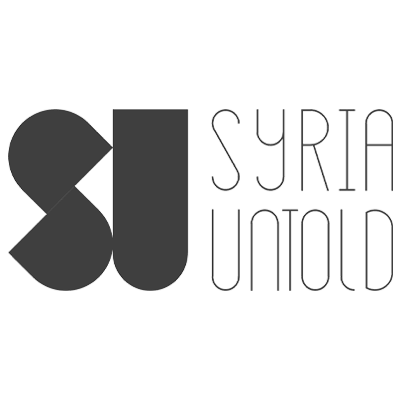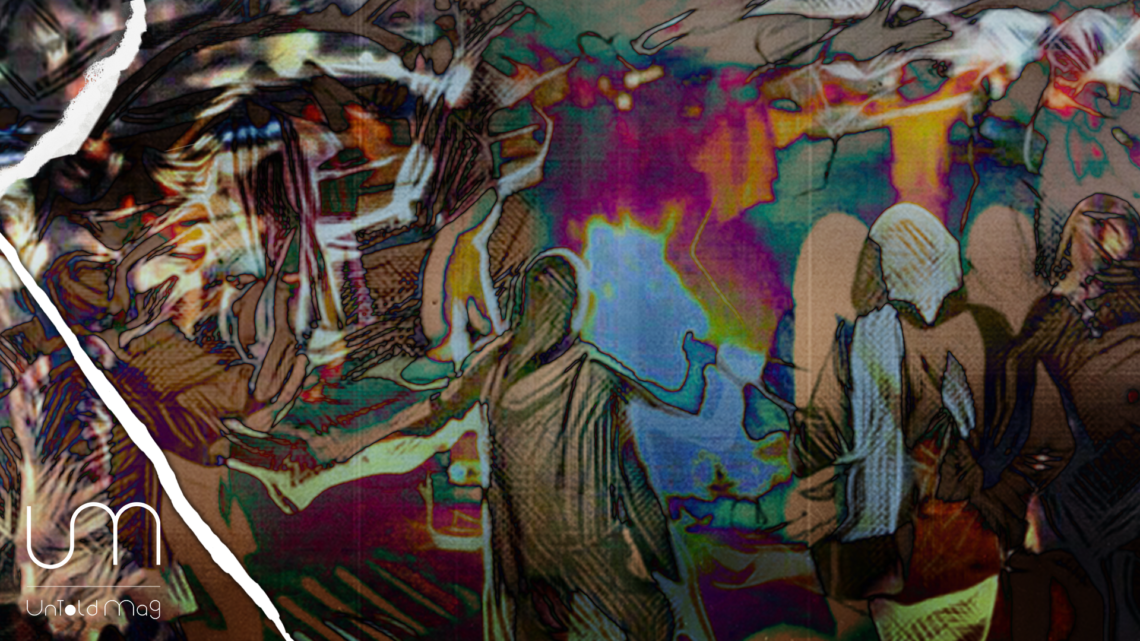Come along, along, the street is calling you to its song
Calls you in your first name: Freedom
Say it loud and loud,
To all those silenced their grudge in throat
They are no longer alone*
به نام کوچکت که نام آزادیست
بگو بگو
به هر که بغض کهنه اش نشسته در گلو
بگو در این میانه تنها نیست
A couple of weeks after the 1979 revolution, rumors of imposing compulsory hijab caused the first demonstration against the post-revolutionary Islamic state. In the past four decades, millions of women in Iran have been approached, arrested or harassed by hijab police and resisted it on a daily basis. Thus, resistance to the mandatory hijab, both individually and collectively, is not new in Iran. Nevertheless, this resistance exploded into a revolution 43 years later, on the 16th of September 2022, when Jina (Mahsa) Amini, a young Kurdish woman visiting Tehran, was arrested by the Iranian hijab police for not properly wearing the Islamic hijab in public.
According to eyewitnesses, during her arrest, which lasted a couple of hours, Amini was subject to insults and severe physical violence by the police. Later she was taken to the hospital unconscious and died there after being in a coma for four days.
“Dear Jina! You will not die. Your name will turn into a symbol”, Jina’s family wrote on her tombstone. Her name was then repeated all around the world in streets and cyberspace to encapsulate the density of the revolution: its magical moment.
The magic of revolution: More than processes
“Don’t leave us alone”, Jina’s family asked people who attended her funeral. The call was answered in the largest demonstrations in the history of Iran; demonstrations which have spread to every corner of the country and succeeded in reconnecting the diaspora with their homeland.
The call first echoed in Saqiz, Jina’s hometown in Kurdistan, where women collectively unveiled in public shouting “Jin, Jian, Azadi” (Woman, Life, Freedom), a slogan rooted in the transnational struggle of the Kurdish people, particularly in Rojava.
In reaction to the oppression of Kurdish people in Saqiz, other parts of Kurdistan took to the streets: “Saqiz is not alone; Sanandaj is supporting it”. And the rest of Iran, from Tabriz to Tehran to Zahedan, came to the streets with solidarity actions in support of others who suffer from the Islamic regime for similar or different reasons. The wave of solidarity since then has crossed boundaries and borders, whether geographical or political. A revolutionary energy is released from the fusion of pains.
To make sense of any revolution and its novelties, we need to go beyond a procedural analysis, which tends to emphasize historical processes leading to a revolution. This does not mean rejecting the importance of such processes and of the history of discontent and resistance in Iran. But we also need to demarcate what we call the magic of a revolutionary moment. To play with what Edward Said famously wrote on exile, the magical moment of revolution is strangely magnificent to experience but extremely hard to describe. It is what makes the present so inflated that it marginalizes the past and future. Similar to messianism, but not to be mistaken with it: as if the whole past was there to reach this moment and the whole future would be its residue. This is how a revolutionary moment transforms the boundaries of imagination on a collective level.
From fear to anger
Finally, we have crossed barriers of fear
Finally, we have found our way to the alley
The wind was kissed by your hair
Revived city of death seekers and despair
ما دگر از حصار ترس رد شدیم
عاقبت راه کوچه را بلد شدیم
موی تو بوسه زد به روی بادها
زنده شد شهر مرگ و مرده بادها
Before the Jina Revolution, fear was the hallmark of politics in Iran, like many other places around the world. Fear that things can get worse, and therefore, it is preferable to vote for reformists. Fear of a war with the USA or Israel. More importantly, fear of becoming the new Syria, which fell into a civil war despite all the sacrifices. Fear of happiness. Fear as the only small distorted window we see the world through.
The regime has sponsored an overarching horrific image of future without the Islamic Republic through its complex apparatus of fear production and distribution. Syria and, in particular, what the Iranian regime did to the people there in support of the Syrian regime, became the token of fear of a failed revolution. Fear of a civil war with no monopoly on and no boundary for violence. The long-lasting fear of a civil war brings about a discursive constellation around “national security” that overrides all ethical considerations and justifies the harshest measures of suppression.
Apart from the Syrian case, for many it was the uncertainty of the post-Islamic Republic era that played a major role in their reluctance to participate in the demonstrations. The fear of being a minority and alone in facing a frightening tomorrow.
Perhaps the magnificence of the current revolutionary moment is that fear is no more the main frame for understanding today and possible tomorrows. The current moment is perceived so inflated as it makes tomorrow less important for consideration: There is no greater fear than the defeat of the ongoing revolution.
In the revolutionary moment, fear, as the dominant political frame of the past, is transformed into anger. It is hard to find anyone in Iran who is not angry with the state, but perhaps it is equally difficult to find a single overarching reason for these various angers in view of their particular histories. A person does not need to be part of an opposition or actively engage with Islam or politics to be angry. To live in Iran is enough. The rise in poverty has coincided with shameless corruption manifested in multiple and well-known cases that now barely make the headlines because of their growing number.
Corruption is a daily experience in Iran. The 1979 Revolution was a call for justice, but now almost nothing remains from that claim. Unless you belong to the connected elite, you most probably have dramatically suffered from inflation and cuts. A gender apartheid regime which has forced mandatory hijab and segregation has most probably influenced you or someone close to you. Even if you were a religious person, you would have many reasons to consider the current regime as a humiliation of what you believe.
From anger to care
“Fear not! Fear not! We are all together” was the most prominent slogan of the 2009 green movement in Iran. In the Jina Revolution, the protestors, in their slogans and performances, present the overcoming of this fear and add an appendix to it: “Fear us! Fear us! We are all together”.
However, this uniting anger goes beyond mere collective discontent. It is perhaps more about understanding the pains of others and their sufferings, to build up a feeling of solidarity across different types of anger. This solidarity with its angry tune is a distinguishing aspect of the current struggle. Barely anyone could imagine peripheries with different histories of conflict singing in solidarity together. As if a new sense of nationhood, a new imagination of togetherness is taking form. A new conceptualization of being Iranian with the potential for a more just and inclusive ‘We’.
All this testifies to the rise of a politics of care that puts solidarity at the heart of the revolutionary moment, articulating several histories of oppression/resistance together. It is a collective kashf (unveiling), or a sudden revelation of “being Iranian”: divided in pains, united in anger. This is the turning point from a politics of fear to a politics of care, and this is the hallmark of the Jina Revolution.
Thus neighborhoods, as spaces of care where life is reproduced and vital resources are distributed, have become the main sites of protests in Iran. In contrast to the Green Movement and its emphasis on the central cities and streets, in the Jina Revolution the peripheries are leading, and the center follows.
This is not limited to the pioneering role of Kurdistan and Balochistan in the protests—both suffering from long-lasting ethnic/religious discrimination even before the Islamists. The revolution is a revolt against peripheralization itself. It celebrates multiplicity and unity in diversity.
Perhaps it is its multiplicity that explains the revolution`s specific form of organization: the revolutionary strategies in practice are produced and dictated from below, while the usual leaders, at best, contribute only at a tactical level. For example, coordinating a single demonstration or logistic/guidelines for actions. Thus, it is a chaos that challenges state power and its manifestation. An ungovernable mass of forces overthrowing current and forthcoming efforts to homogenize it in an Islamist/nationalist coffin.
A feminist revolution and beyond
Stay, with me on my way,
Sing along, sing along,
for this sudden song,
from one person to another person,
has reached every horizon,
with happiness,
with freedom,
woman life
woman life freedom
freedom
بمان و در کنار من
بخوان بخوان
که این سرود ناگهان
دهان دهان
رسیده تا به هرکرانه
با شادی
آزادی
زن زندگی
زن زندگی آزادی
آزادی
The compulsory hijab is the most important manifestation of state power in Iran. Hijab police, in its different names, has targeted millions of women in the past four decades. The compulsory hijab marks the territory of the Islamic Republic: a continuous territorialization based on fear. For the same reason, it has become the main expression of the revolt. To challenge it, to unveil, is performative in nature.
“Woman, Life, Freedom”, in this context, brings together collective feelings of reciprocity and sharing of pains. To care for others and be cared for. The slogan, in this sense, appeared as the negation of the Islamic regime, which started with oppressing women, overlooked life in its otherworldly ideology and started a war on freedom from its first day in power.
It is a feminist revolution in this sense. Neither because its pioneers are Kurdish feminist women, nor because of the importance of compulsory hijab in the revolutionary anger. More than all this, it is because the revolution is about the politics of care and solidarity. To care is a part of any revolution, perhaps. However, it features as the main theme in this case.
To leave no one behind. In this sense, feminism is not just about gender equality, but a radical transformation of social relations. This is what makes the ongoing revolution in Iran also relevant beyond its national boundaries.
The wave of solidarity in the Jina Revolution has already shown its potential to go beyond the national borders of Iran, as it resonated with discontent in Turkey, Iraq, Syria, Afghanistan, Kurdistan and Lebanon, and other geographies. It has the potential to reimagine the whole region from below based on a shared destiny. A region which now shares war, environmental crisis, inequality and displacement, as well as neo-liberalization, corruption and censorship. A battleground for external wars and rivalries at the expense of ordinary people’s life and dignity.
This re-imagination is not happening for the first time and its outcomes are not guaranteed, however, as there is no single railway for the train of history. What the Jina Revolution brings forward is the collective feeling of openness about the future. Not haunted by old curses or doomed to be the same as or worse than the present.








